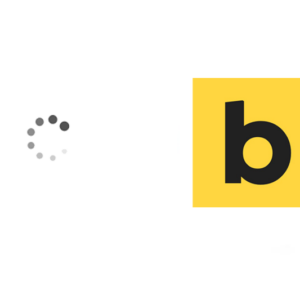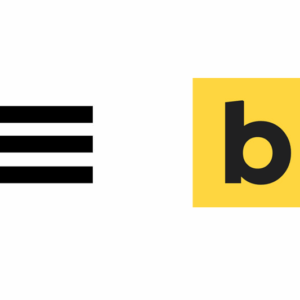Attributes can be added into various HTML markup elements via filters in the Genesis Framework, these attributes can be adding in an ID or additional CSS Class, or amending the Microdata Schema including role, itemscope or itemtype attributes.
The HTML markup elements/sections also known as ‘contexts‘ are originally declared as functions in the core Genesis Framework in:
genesis/lib/functions/markup.php
Take for example the primary sidebar, it’s original markup/function is:
add_filter( 'genesis_attr_sidebar-primary', 'genesis_attributes_sidebar_primary' );
/**
* Add attributes for primary sidebar element.
*
* @since 2.0.0
*
* @param array $attributes Existing attributes.
*
* @return array Amended attributes.
*/
function genesis_attributes_sidebar_primary( $attributes ) { $attributes['class'] = 'sidebar sidebar-primary widget-area'; $attributes['role'] = 'complementary'; $attributes['itemscope'] = 'itemscope'; $attributes['itemtype'] = 'http://schema.org/WPSideBar'; return $attributes; }
The attributes which are output in the Primary Sidebar are class, role, itemscope and itemtype, these are rendered in the HTML as the attribute and corresponding value, itemscope and itemtype being attributes of MicroData Schema.
The attributes are declared in the genesis_attributes_sidebar_primary function part of the code, and passed into the genesis_attr_sidebar-primary filter above the function.
So in a Genesis Child theme for example, if you wanted to include extra CSS classes rather then alter the original code you would use the same filter but in your child themes functions.php file, in the case of the primary sidebar the filter being genesis_attr_sidebar-primary, lets add in and output 2 extra CSS classes: secondary and toggled-on
add_filter( 'genesis_attr_sidebar-primary', 'themeprefix_add_css_attr' );
function themeprefix_add_css_attr( $attributes ) {
// add original plus extra CSS classes
$attributes['class'] .= ' secondary toggled-on';
// return the attributes
return $attributes;
}
In the above code just the class attribute is being filtered, keeping in the original classes and appending in the new ones with the use of the period before the equals sign.
The previous attributes of role, itemscope and itemtype are still pulled from the original markup.
Also possible is to add additional attributes, say for example you wanted to add a CSS selector ID attribute to the primary menu
add_filter( 'genesis_attr_nav-primary', 'themeprefix_primary_nav_id' );
function themeprefix_primary_nav_id( $attributes ) {
$attributes['id'] = 'sidr';
return $attributes;
}
Just note in the above example when checking the markup the id attribute would be the last attribute in the element.
In the table below are the majority of the contexts and corresponding filter names, these can be changed to adjust and include various attributes; adding or removing markup throughout of all the framework.
| Context/HTML | Genesis Filter |
|---|---|
| body | genesis_attr_body |
| site-header | genesis_attr_site-header |
| site-title | genesis_attr_site-title |
| site-description | genesis_attr_site-description |
| header-widget-area | genesis_attr_header-widget-area |
| nav-primary | genesis_attr_nav-primary |
| nav-secondary | genesis_attr_nav-secondary |
| nav-header | genesis_attr_nav-header |
| structural-wrap | genesis_attr_structural-wrap |
| content | genesis_attr_content |
| entry | genesis_attr_entry |
| entry-image | genesis_attr_entry-image |
| entry-image-widget | genesis_attr_entry-image-widget |
| entry-image-grid-loop | genesis_attr_entry-image-grid-loop |
| entry-author | genesis_attr_entry-author |
| entry-author-link | genesis_attr_entry-author-link |
| entry-author-name | genesis_attr_entry-author-name |
| entry-time | genesis_attr_entry-time |
| entry-modified-time | genesis_attr_entry-modified-time |
| entry-title | genesis_attr_entry-title |
| entry-content | genesis_attr_entry-content |
| entry-meta-before-content | genesis_attr_entry-meta-before-content |
| entry-meta-after-content | genesis_attr_entry-meta-after-content |
| archive-pagination | genesis_attr_archive-pagination |
| entry-pagination | genesis_attr_entry-pagination |
| adjacent-entry-pagination | genesis_attr_adjacent-entry-pagination |
| comments-pagination | genesis_attr_comments-pagination |
| entry-comments | genesis_attr_entry-comments |
| comment | genesis_attr_comment |
| comment-author | genesis_attr_comment-author |
| comment-author-link | genesis_attr_comment-author-link |
| comment-time | genesis_attr_comment-time |
| comment-time-link | genesis_attr_comment-time-link |
| comment-content | genesis_attr_comment-content |
| author-box | genesis_attr_author-box |
| sidebar-primary | genesis_attr_sidebar-primary |
| sidebar-secondary | genesis_attr_sidebar-secondary |
| site-footer | genesis_attr_site-footer |
Some more Archive specific headings and descriptions
| Context/HTML | Genesis Filter |
|---|---|
| archive-title | genesis_attr_archive-title |
| taxonomy-archive-description | genesis_attr_taxonomy-archive-description |
| author-archive-description | genesis_attr_author-archive-description |
| cpt-archive-description | genesis_attr_cpt-archive-description |
| date-archive-description | genesis_attr_date-archive-description |
| blog-template-description | genesis_attr_blog-template-description |
| posts-page-description | genesis_attr_posts-page-description |
Outside of these, even contexts which are not declared can have the genesis_attr applied, as along as it is a valid HTML element with a class, so for example the .site-container div can be manipulated with…
add_filter( 'genesis_attr_site-container', 'themeprefix_site_container_id' );
function themeprefix_site_container_id( $attributes ) {
$attributes['id'] = 'my-new-id';
return $attributes;
}
So in the above I am giving an ID to the site-container by suffixing the genesis_attr filter with the class genesis_attr_site-container and passing in the function below it. This now allows me to change the attributes of that element.










25 comments
Kevin Donnigan
Hey Neil,
I am trying to change the
itempropattribute on a single custom post type page. So I’m using this:add_filter( 'genesis_attr_entry-content', 'agenda_entry_attributes', 20);
function agenda_entry_attributes( $attributes ) {
if( is_singular( 'leadership' ) ) {
$attributes['itemprop'] = '';
return $attributes;
}
}
It works. But it generates an error that I can’t get rid of:f
Warning: Invalid argument supplied for foreach() in .../wp-content/themes/genesis/lib/functions/markup.php on line 123
I’ve also tried
if ( get_post_type() == 'leadership' )with no luck. Can you advise?Thanks in advance!
Neil Gowran
Hi Kevin – what you need to do is return the $attributes after the conditional statement – so it returns altered if the condition is met and unaltered if not.
add_filter( 'genesis_attr_entry-content', 'agenda_entry_attributes', 20);
function agenda_entry_attributes( $attributes ) {
if( is_singular( 'leadership' ) ) {
$attributes['itemprop'] = '';
}
return $attributes;
}
Brent
I am adding a class to the entry-title item and I see an error above the titles on the archive page(s) when I debug. The error is:
Warning: Invalid argument supplied for foreach() in usr/.................../themes/genesis/lib/functions/markup.php on line 123My google-ing has turned up the suggestion that an array is not being created at one step or another somewhere along this process where it should be (sorry if this is vague, I’m still learning). See this thread on StackOverflow http://stackoverflow.com/questions/2630013/invalid-argument-supplied-for-foreach
Felicia Betancourt
Two words: life saver! I thoroughly agree with one of the other commenters that it’s outrageous that StudioPress (or Rainmaker, or whatever they’re calling themselves this week) do not expose these filters in their code snippets section. Thanks a million.
Ataul Ghani
I was looking for this type tutorial. Finally got it here. Loved it!
Paolo
hi, why this code working on site header and not work on article page ? there is another hook to use ?
add_filter(‘genesis_attr_site-header’, ‘capri_service_body_class’);
function capri_service_body_class($attributes) {
// add original plus extra CSS classes
$attributes[‘class’] .= ‘ light’;
// return the attributes
return $attributes;
}
Sean Vandenberg
Thanks, Neil. I was trying to reposition the site header, footer widgets and footers OUTSIDE of the body… but that wasn’t doing the trick. So instead I added a class to the entry content. Thanks again, Sir!
Lloyd Silver
This is very helpful. Would you mind sharing how I would remove the schema markup for multiple sections.
Would it be something like:
remove_filter( 'genesis_attr_sidebar-primary', 'genesis_attributes_sidebar_primary' );
add_filter( 'genesis_attr_sidebar-primary', 'sidebar_attributes_without_schema' );
function sidebar_attributes_without_schema( $attributes ) { $attributes['class'] = 'sidebar sidebar-primary widget-area'; $attributes['role'] = 'complementary'; return $attributes; }
So basically remove the built-in filter and then add a new one without the schema?
Kenny Eliason
This is a freaking awesome list. Thanks for putting it together. I’m running into an issue where when I add an attribute to the genesis_attr_entry filter, it also hits the entry’s that are down in the footer. I only want it to show up on the site-inner section. Thoughts?
Neil Gowran
Since it will add the attribute wherever the .entry is used I would use a hierarchal CSS/JS selector to target a specific part of the layout.
Patrick Fortino
Neil. Thanks a million for this tutorial. It’s “The Missing Genesis Manual.” On the studeopress site, they don’t list these filters in the filter list so I assumed they weren’t available. For a long time, I’ve wanted to modify or add to the default genesis div classes so I could use my own grid system. I looked in the code but couldn’t figure out how to do it. This tutorial made it crystal clear.
Neil Gee
Looks like a great title – “The Missing Genesis Manual.”
Karla
This is very helpful. I wish that StudioPress would make these kinds of tips available to the people who buy their themes.
I used this technique and it worked great except when I tried to modify footer-widgets-1 which failed. The generalization you discovered works but not always.
I am having trouble figuring out when it works and when not, but mostly it seems that it works on major elements like site-footer, footer-widgets, site-inner etc, but not items like footer-widgets-1, wrap, and widget-wrap.
Thank you again for posting.
duynguyen
this is exactly what i need. Thanks for your great article!
Chuck Reynolds
genesis_attributes_sidebar-primary should actually be “genesis_attr_sidebar-primary”. At least in Genesis 2.1.3+
I didn’t check the rest but just came across your page for that. fyi. Cheers
Neil Gee
Thanks, updated
Aaron
genesis_attr_entry-image – Doesn’t work for custom post type loop with an image.
Here’s what I’m using:
add_filter( ‘genesis_attr_entry-image’, ‘local_image_custom_attributes_entry’, 20 );
function local_image_custom_attributes_entry( $attributes ) {
if (is_singular( ‘local’ ) || is_archive(‘local’)
)
{
$attributes[‘itemprop’] = ‘image’;
}
return $attributes;
}
I am able to filter genesis_attr_entry-title and genesis_attr_entry with that snippet above.
Any ideas why this wouldn’t work with the image?
Thanks.
Neil Gee
Try as your condition
if ( get_post_type() == 'local' )Amanda
Thanks, this is really helpful
TOMo NG
I would like to change Genesis child theme logo by this HTML code at here: http://www.studiopress.com/forums/topic/how-to-add-a-class-for-logo-daily-dish-pro-theme/
Trying to use peShiner effect for my logo. I tried your tutorial above but don’t known how to add the image for the code. Could you please help ?
Thanks
TOM
Neil Gee
try adding
add_filter( 'genesis_attr_site-title', 'custom_add_css_attr' );
function custom_add_css_attr( $attributes ) {
// add original plus extra CSS classes
$attributes['class'] .= ' peShiner';
// return the attributes
return $attributes;
}
Henry
Hi,
Have an error with your code, pls fix it
Wrong: sidebar_primary genesis_attributes_sidebar_primary
Right: sidebar-primary genesis_attr_sidebar-primary
Neil Gee
Well spotted Henry – post is updated
Paul
I still see genesis_attributes_sidebar_primary in the table is that wrong too?
Neil Gee
Updated – Thanks